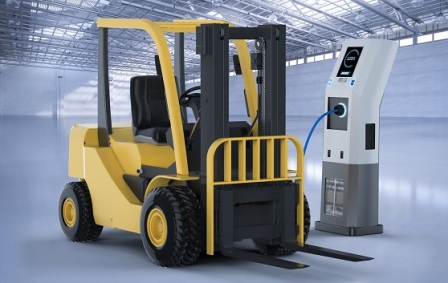A new report, courtesy of IDTechEx , “Electric Vehicles in Construction, Agriculture and Mining 2020-2030” uniquely addresses a huge opportunity.
[dropcap]V[/dropcap]ehicles for construction, agriculture and mining CAM have become one industry served by giants such as Caterpillar, CNH Industrial, John Deere and Komatsu but also small businesses making the new requirements such as drone systems and weeding and mine survey robots.
Raghu Das, CEO of IDTechEx advises, “The giants in CAM vehicles are cautiously going electric, but they should learn from the startups and the Tier One suppliers plunging into the world of precision farming, drones, swarming robots and the moveable zero-emission microgrids to charge them. For instance, parts and systems suppliers Cummins and Dana Corporation are making many shrewd acquisitions while exiting yesterday’s technologies. CAM giants doing the same instead of defending dying diesel genset and vehicle businesses can grow past $100 billion in ten years, overtaking shrinking car companies in the process. This industry awaits a Tesla or VW in commitment to electric vehicles. It will roast the others.”
“Coping with tougher locations, tougher pollution regulation and lack of staff are part of the new CAM reality, but it is being solved by plenty of investment, radically new technology and strong demand for both new vehicles and moveable zero-emission sun/ wind/ water microgrids to charge them, all addressed in the report. This is the opposite of the perfect storm faced by the car industry. This is an “idea whose time has come”.”
The 40-page Executive Summary and Conclusions is sufficient in itself for those in a hurry. Mainly easily understood infograms such as the construction site, farm and mine of the future plus comparisons, timelines and forecasts, it also gives 22 primary conclusions split into Industry, Regional and Technology-related. Primary areas of development are revealed by application and technology and heroic advances from deep mining to vertical farming each without people. Solar driven agribots will replace poisons. The forecasts 2020-2030 are for no less than 19 vehicle categories each by number, price and market value. Price parity with diesel is predicted by type and year. See the patent trends and market outlook for key categories and for autonomy with all of them with adoption timeline 2020-2030.
The Introduction looks at industry and technology commonalities, the pollution issues, the many drivers of electrification, powertrain types and trends, including how hybrids are sometimes needed as an interim stage. Many examples bring it alive and challenges such as crop yields no longer increasing are introduced together with many solutions from precision farming to swarming robots and how deep mines become unmanned.
The next three chapters look in detail at where we are today and where we are going in respectively Construction, Agriculture and Mining vehicles that are pure electric or hybrid. Each starts with an overview of needs and actions, then case studies are grouped by type, with the agriculture section, even including the new forestry and turf care EVs. Drones are covered but, as befits the market potential, nearly all the text concerns land vehicles. That involves 52 company/product analyses.
Chapter 6 gives a thorough treatment of what are now the key enabling technologies of CAM EVs – electric motors/ motor-generators, traction battery systems, supercapacitors, power electronics, solar bodywork and zero-emission transportable microgrids for charging. Add to that autonomy, a subject now so important that Chapter 7 covers autonomy in action with many CAM vehicles and Chapter 8 covers the robotic technology in detail. It adds up to over 350 pages of distilled information all of which is about the present and future – no rambling nostalgia – and based on ongoing global travel, event attendance and interviewing by multi-lingual PhD level analysts from IDTechEx. This company even has drill-down reports on most aspects for those wanting to delve even deeper.





